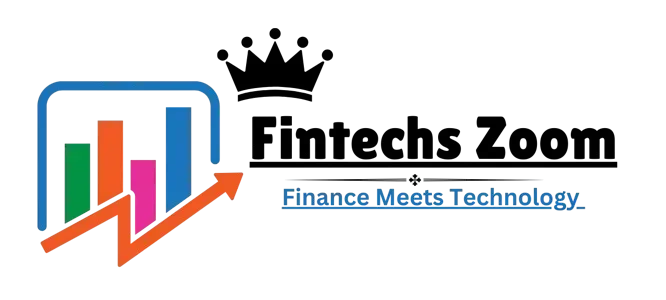In today’s busy world, time is a precious commodity. Reading is important for gaining knowledge but often requires a substantial time investment. Fortunately, with the proper approach, you can learn to read faster without sacrificing comprehension. This allows you to get through more material in less time.
This article outlines methods for reading PDF books quickly and effectively. You will learn pre-reading, reading, and post-reading techniques to boost efficiency. Additionally, tips for improving reading speed, tools and resources that can help, and solutions to common challenges are provided. Put these skills into practice and watch your reading productivity soar!
Pre-Reading Techniques
Taking a few minutes to preview and prepare before diving into a PDF book will facilitate faster, more focused reading.
Set Goals and Expectations
Clarify why you are reading this particular book. Are you reading for entertainment, researching a specific topic, or trying to gain broad knowledge? Define your purpose so you know what information to focus on.
Consider what you already know about the subject. This provides context for connecting new information.
Set a target completion date to keep yourself accountable without feeling rushed. Breaking a book into daily reading goals can help you maintain steady progress.
Preview the Material
Please read the title, subtitle, and back cover summary. This will give you insight into the book’s content and focus.
Study the table of contents. The TOC outlines the main ideas and structure and shows which sections are most relevant to your goals.
Flip through the book, glancing at headers, images, and key text to get a feel for the visual layout and density of information.
Read the preface or introduction. This prepares you to absorb content by revealing the author’s perspective and purpose for writing.
Identify the Purpose of Reading
Before starting, clarify your own purpose for reading. Are you aiming to:
- Obtain specific facts or data?
- Survey a general area of knowledge.
- Critically analyze an argument.
- Follow a process or procedure?
- Solve a particular problem?
Knowing this in advance allows tailored use of reading strategies.
Reading Strategies
Once you have set objectives and previewed a book, you can begin reading through the material strategically.
Skimming and Scanning
Skimming means rapidly moving your eyes over the text to absorb the main ideas and structure. Scanning involves quickly searching for specific details like names, dates, or keywords. Use these approaches to grasp the “landscape” of a chapter or section first. The context will help details make sense later.
Active Reading Methods
Active reading keeps your mind engaged as you move through the material:
- Ask questions that you expect the text to answer. This gives purpose to your reading.
- Connect ideas you read to what you already know about the topic. Look for ways the author supports, refutes, or expands your existing knowledge.
- Take brief notes on major concepts, unique terminology, interesting facts and ideas. This cements understanding.
- Visualize descriptions. If the text depicts a process, person, or place, picture it in your mind. Imagery builds stronger memories.
Note-taking Techniques
Writing while you read forces you to distil and organize key points for better recall:
- Mark meaningful passages using highlighters or sticky notes. This draws your attention to re-reading.
- Paraphrase core concepts in the margins or in a notebook. Rephrasing imprints ideas with your own words.
- Record new vocabulary words and their definitions. This builds language skills to aid further reading.
- Log questions or comments prompted by the text. Following this trail of thought often reveals deeper insights.
Post-Reading Strategies
After completing a book or chapter, take time to solidify what you have absorbed.
Summarize Key Points
- Identify the 5-10 most significant ideas or pieces of information.
- Write a short synopsis covering the main concepts and conclusions.
- Explain to someone else what the reading was about, hitting just the highlights.
Review and Reflect on the Content
- Carefully reread any sections you flagged as important or confusing.
- Answer questions you posed before and during your initial read.
- Consider the meaningful implications of what you have learned from this reading. How does it change or expand your point of view?
Apply What You’ve Learned
- Discuss with others how the ideas might apply in actual practice.
- Imagine using the knowledge to explain something to a friend or solve a problem.
- Put lessons into action right away through a related task or activity.
Improving Reading Speed
With diligent practice, you can condition your eyes and mind to process text more rapidly without sacrificing retention.
Subvocalizing means internally pronouncing the words as you read. This limits you to speaking speed. Reducing subvocalization through training allows your eyes to take in more words per minute.
Using peripheral vision to recognize words on either side of the focal point removes the need to fixate on each word. This shrinks the number of eye fixations per line and boosts the reading pace.
Apps, online programs, and speed reading courses offer exercises and timed reading challenges to help develop faster reading habits. With consistent practice, reading speed increases steadily over time.
Tools and Resources for Efficient Reading
Take advantage of available tools and education to further improve reading effectiveness and pace. Apps like Outread, ReadME, and Spreeder display text optimized for speed reading and facilitate pacing and training. Some also include comprehension tests.
Structured online speed reading programs from services like Iris Reading and ReadPal provide instruction and timed reading drills to systematically build speed and ability.
Using a pointer to guide your eyes, anti-glare page screens that reduce distractions, or apps that consolidate text into efficient formats can aid faster reading.
Nowadays, you can even find AI chat pdf and book reading tools that can help you summarize the key points of your book. This can help you learn quicker and better.
Common Challenges and Solutions
Even skilled readers face obstacles that hamper productivity and comprehension. Awareness of these pitfalls is key to overcoming them.
Find a quiet, designated reading spot away from people, and other diversions. Silence phones and notifications. Use background noise cancellation headphones if needed. For dense text, adjust by concentrating intensely or slowing pace and rereading challenging sections. Summarize concepts in your own words. Discuss ideas with others.
Set a purposeful goal before every reading session. Reward progress consistently. Keep interesting texts handy for variety. Take real breaks to renew your mental energy.
Conclusion
Reading for growth and learning need not excessively tax your schedule. Applying strategic reading methods, improving speed, using tools, and overcoming obstacles can all optimize your reading effectiveness.
Cultivate daily habits that allow brisk, attentive, and productive material intake. Make your reading time pay rich dividends so you can accomplish more while expanding your knowledge and perspective. The insights and abilities gained will continue for lifelong enrichment through books.

